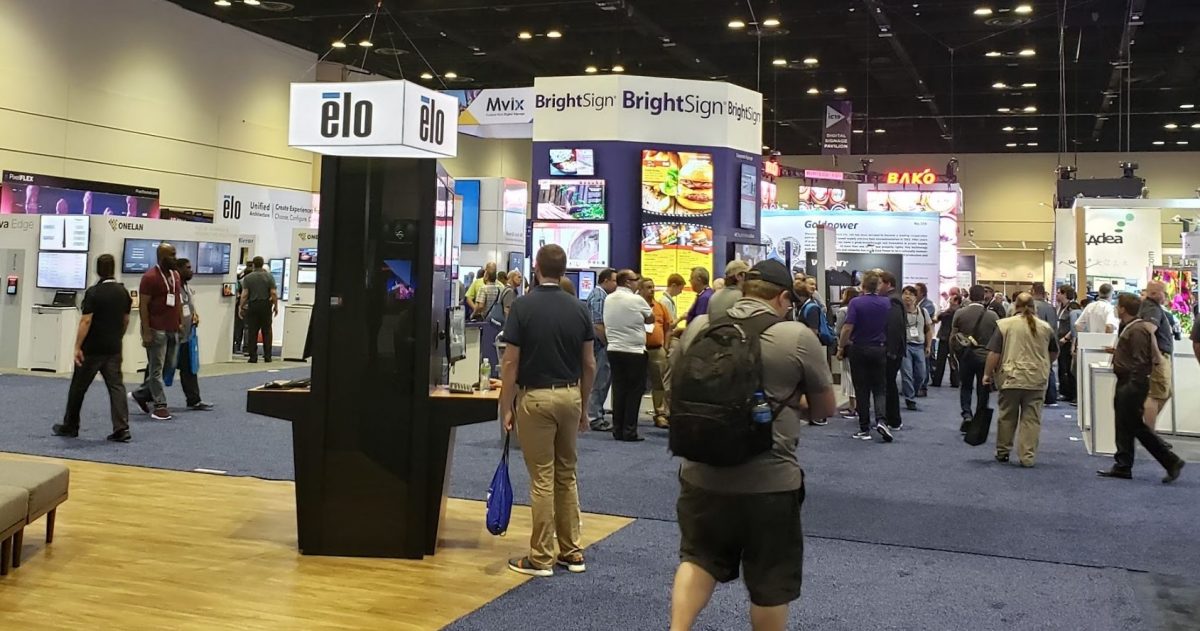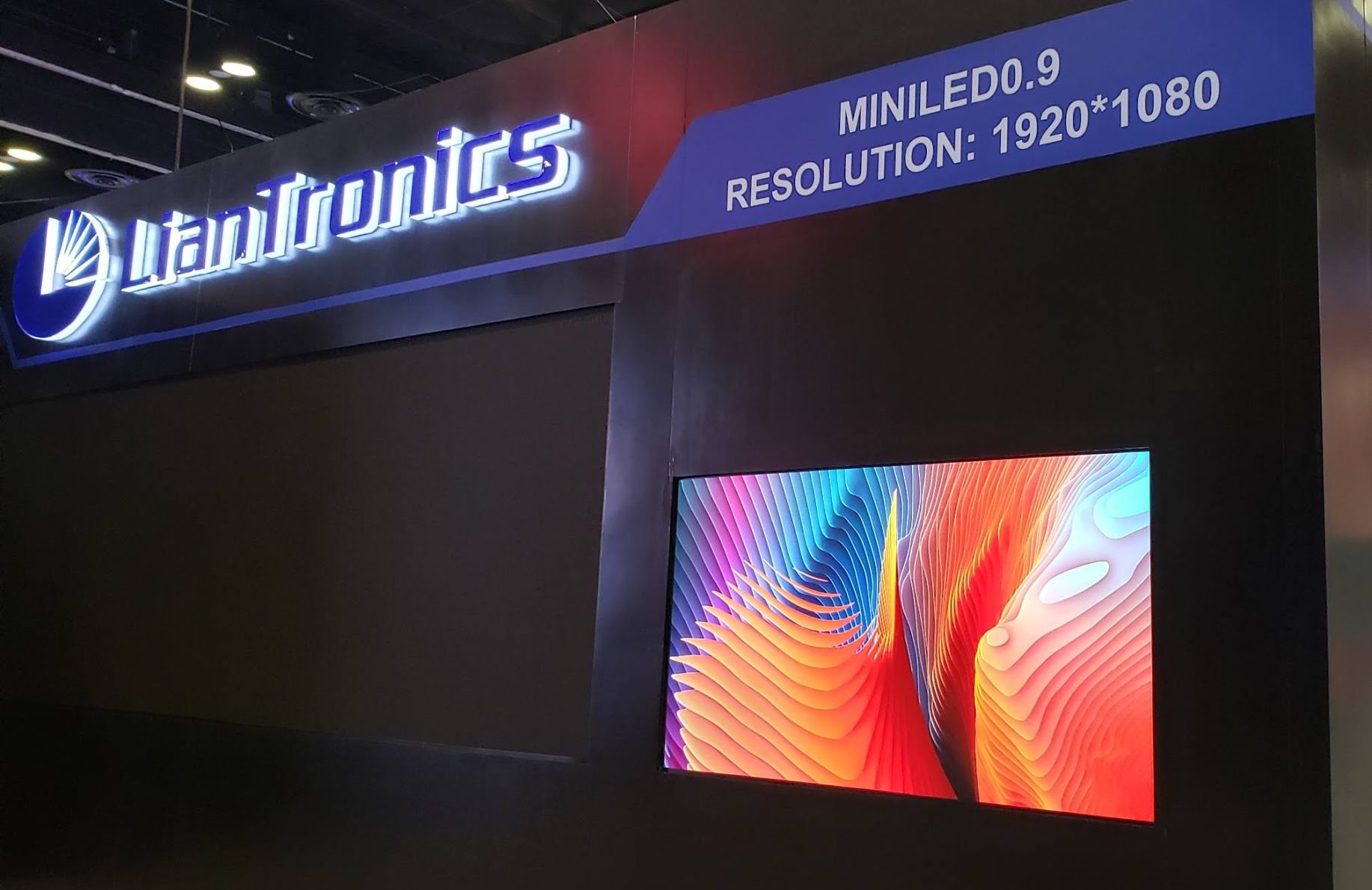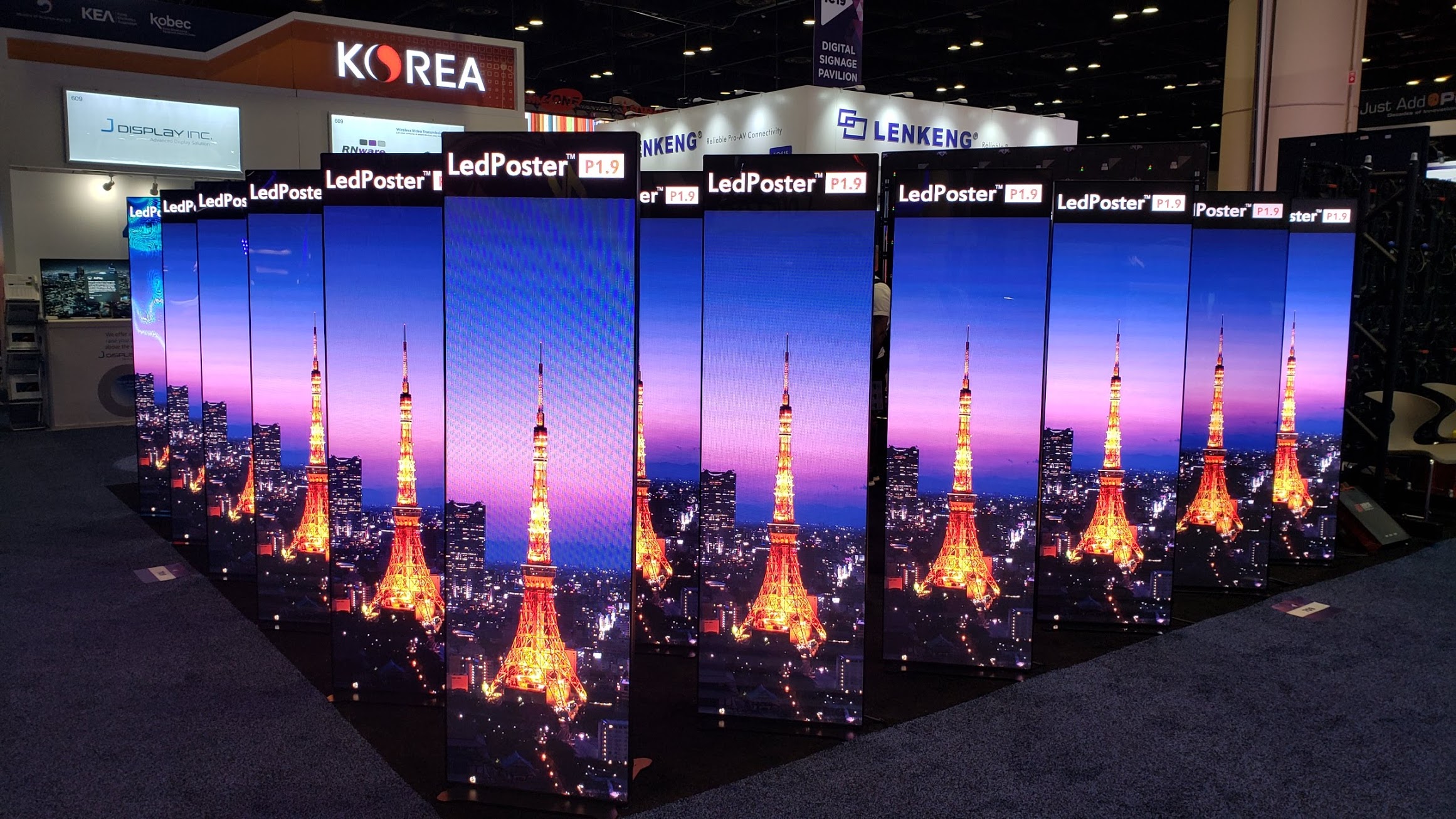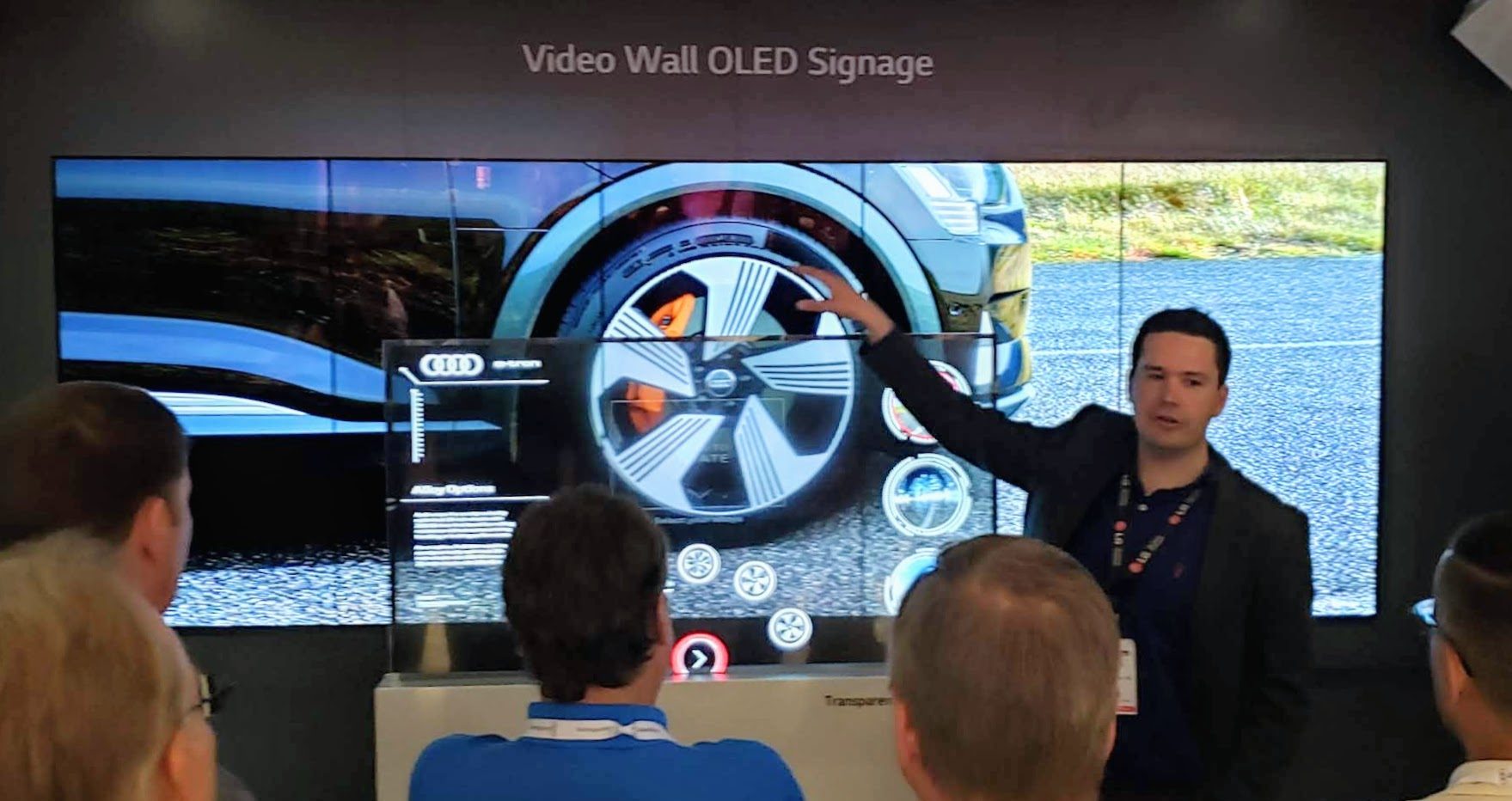
InfoComm Day 2: No Great Leaps Forward, But Many Subtle Advances
June 14, 2019 by Dave Haynes
Tons of great conversations and product demos on Thursday at InfoComm 2019.
While it is very, very accurate to say there was/is not a whole pile that is strikingly new at this trade show, as you might expect, when you dig in, there’s lots going on and lots of subtle but meaningful improvements or innovations.
Of note …
Philips has come a very long way back from the commercial display wilderness to be a vendor of note these days. I had a walk-through of the company’s substantial stand, and came away impressed. Like a handful of other companies, including LG, they are packaging up fine pitch LED displays as VERY LARGE pro displays, with a well defined size, and all the bits that are needed, including a trim kit. This simplifies things, hugely, for integrators who don’t have much experience with LED and what they’d likely see as intimidating installs.
Philips also showed me a cool Augmented Reality-driven design tool that allows integrators and end-users to use an app to visualize the dimension and positioning of screens, without actually putting them in. I have seen this with online tools (notably Planar), but not in an app (iOS or Android).
I also learned Philips is upgrading its smart displays to Android 7 – which offers more horsepower but also more security. (Sharp doing that, too). Speaking of Android, Minneapolis-based Skykit, which has been all Chrome all the time, now has an Android version of its CMS and was talking it up in a patch of the Philips booth.

I visited a pile of LED vendors. While I suggested in my Day 1 report that there was very little crap LED to be seen, I found it on day 2. However, the majority of the vendors have product that at least looks good. How you get service and support from 10-12 time zones away escapes me, but at least the displays will look pretty good … until they don’t.
Unilumin, which is doing a pile of business in the US at the moment (and seemingly has a pile of ex-Christie people) has a big, impressive booth. Most of the LED guys have good looking stuff, but one of Unilumin’s sales guys showed me some cool, very subtle innovations like a motorized thingie that pushes out a module for servicing without needing to use a giant magnet on a handle. It also had dead simple connectors.
I have known a little Indiana company called Neoti forever, and many business pivots later, learned the guys are now doing very well selling their own LED line, designed in the US and contract-manufactured (like most guys) in China. Interestingly, broadcast sets are a big vertical. They have one of very few, so far, Chip On Board fine-pitch displays. That’s very nerdy, but what you should care about is that manufacturing process results in an impact resistant display that is NOT bathed/encapsulated in a hardened glue.
Same goes for 4 in 1 LED modules, which is a different manufacturing design that packs four sets of red, green and blue diodes on one chip. LED nerds have told me that makes the modules less susceptible to damage.

I am not sure how I feel about the many, many companies that have LED posters/totems. When they first started appearing on show floors a couple of years ago, the resolution was too low and most seemed to run really hot, particularly because they had acrylic on their fronts. Now, they look pretty good and the designs get the heat out, somehow. But they tend to be an odd, tall shape not used in OOH media, and while tighter pitch makes them look better, the ones I have seen would not handle text well or provide crisp images. A 1.9mm pitch is pretty tight, but even then is still best seen from 15-20 feet back.
Samsung gave me a big booth tour – the third or fourth this year, as I have been to a pile of trade shows. Their stuff always looks great, and there have been some subtle advances integrators would appreciate more than me, like enclosure designs and cable management. The AI-based upscaling of 4K to 8K is very cool. I liked what I saw of tools to calibrate a direct view LED wall from a smartphone. An app works with the Samsung S-Box controller and optimizes one module, which optimizes an LED cabinet, and then the cabinet is the baseline to calibrate the other LED cabinets. Pretty neat. It takes seconds to calibrate a wall, instead of hours. Installers will like that, except maybe the reduction in billable install and service hours.
NEC’s ALP platform is soooo deep now. The granularity of information you get on what happens in a store or other environment is mind-wobbling. This is way, way, way more than camera-based sensors logging how many people looked at a screen, how many people were in an area. Think: this media asset ran in this location at this time, and here’s what happened in terms of attention time, sales, and so on, and then compare all that with whatever you want. Very impressive.
I did a great 45-minute tour of LG’s booth. The micro LED, I was told, is a demonstration of innovation and a message to the market that we’re in the super fine pitch game, too. But it is a demo, not a product, for now. I asked if this was someone else’s tech re-badged as LG, and was assured it comes out of R&D from LG Korea.

The transparent OLEDs are beautiful. The best demo – first done at ISE – was a car configurator for Audi that has a transparent OLED acting as an interactive heads-up display that controls an OLED video wall.
LG told me the pitch on that transparent film they have been showing for a couple of years is what it is. I’d like to see a tighter pitch, but LG says it is a display meant to be seen at a distance, and done right, video looks pretty damn good on it. It is getting traction.
I also saw new LG outdoor displays that are super-bright but also super-slim. They don’t have the bulky look of many outdoor screens and are skinny enough to wall mount. I think they might even be skinny enough to be ADA compliant.
The CMS company MVIX ran me through its content widget line-up – which has the usual stuff, but also a vast variety of what I would call dynamic data widgets that are based on stuff way more exotic than news headlines or sports scores. Think about displaying KPIs from production systems. I think that sort of thing is seriously under-appreciated for workplace environments. People can see the basics on their phones, but it takes screens, dynamic charting and real-rime data to tell workers how things are going on a production floor.
One final note – display vendors and CMS vendors now “get” content. The big guys all had creative on their screens that effectively sold the visual capabilities, or provided the use-case context, or just drew the eye. There are, of course, Chinese companies that were running (and sitting watching) Hong Kong action movies, but most people were running stuff that made their products shine. That wasn’t the case even three years ago.
Heading home. Trade show 6 in the can. Next up – Touch Taiwan in late August.
If you are in Orlando, safe travels home and get well. I swear half the people I know here are sick from heat, heavy air, too cold AC and airborne gunk. Some are losing their voice and it is not from too much talking, or too much partying.
This place, in summer, would be a Lord of the Flies/Mad Max thing in 2-3 hours if the power went out. Las Vegas in June is stupid-hot, but manageable.
Yay Raptors!



Leave a comment